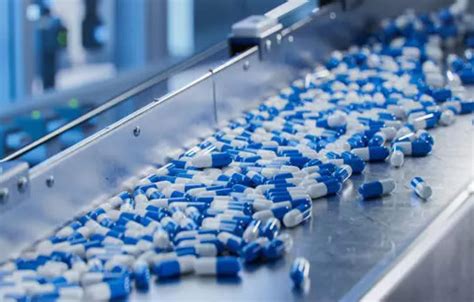Gas chromatography (GC) is a highly effective analytical technique used to separate, identify, and quantify the components of a mixture. It is widely used in various industries, including pharmaceuticals, environmental monitoring, food safety, and forensic science. The versatility of GC lies in its ability to analyze a broad range of compounds, from volatile organic compounds (VOCs) to complex biomolecules.
GC works by injecting a sample into a heated chamber, where it is vaporized and carried through a column by an inert gas, such as helium or nitrogen. As the sample components interact with the stationary phase inside the column, they separate based on their boiling points, affinity for the stationary phase, and molecular weight. The separated components are then detected by a detector, which measures the signal intensity and generates a chromatogram.
Here are 7 key applications of gas chromatography:
Pharmaceutical Analysis
Pharmaceutical Industry

Gas chromatography is widely used in the pharmaceutical industry for the analysis of active pharmaceutical ingredients (APIs), excipients, and impurities. GC is used to determine the purity and identity of APIs, as well as to detect and quantify impurities, such as residual solvents, heavy metals, and degradation products.
Environmental Monitoring
Environmental Pollution

GC is used in environmental monitoring to analyze air, water, and soil samples for pollutants, such as VOCs, pesticides, and heavy metals. GC is also used to monitor the levels of greenhouse gases, such as carbon dioxide and methane, in the atmosphere.
Food Safety Analysis
Food Safety

GC is used in food safety analysis to detect and quantify contaminants, such as pesticides, heavy metals, and mycotoxins, in food samples. GC is also used to analyze the fatty acid composition of foods, as well as to detect adulteration of food products.
Forensic Analysis
Forensic Science

GC is used in forensic analysis to analyze evidence, such as hair, fibers, and accelerants, in arson and explosive cases. GC is also used to analyze the composition of unknown substances, such as narcotics and poisons.
Clinical Analysis
Clinical Diagnosis

GC is used in clinical analysis to diagnose diseases, such as diabetes and cancer, by analyzing biomarkers in biological fluids, such as blood and urine. GC is also used to monitor the levels of therapeutic drugs in patients.
Biotechnology
Biotechnology Research

GC is used in biotechnology research to analyze the composition of biomolecules, such as DNA, RNA, and proteins. GC is also used to analyze the metabolic products of microorganisms and cells.
Petroleum Industry
Petroleum Refining

GC is used in the petroleum industry to analyze the composition of crude oil, petroleum products, and natural gas. GC is also used to monitor the levels of contaminants, such as sulfur and heavy metals, in petroleum products.






Gas chromatography is a powerful analytical technique with a wide range of applications in various industries. Its ability to separate, identify, and quantify the components of a mixture makes it an essential tool in many fields, from pharmaceuticals and environmental monitoring to forensic science and biotechnology.
We hope this article has provided you with a comprehensive overview of the applications of gas chromatography. If you have any questions or would like to share your experiences with GC, please leave a comment below.
What is gas chromatography?
+Gas chromatography is an analytical technique used to separate, identify, and quantify the components of a mixture.
What are the advantages of gas chromatography?
+The advantages of gas chromatography include its high sensitivity, specificity, and speed, as well as its ability to analyze a wide range of compounds.
What are the applications of gas chromatography?
+The applications of gas chromatography include pharmaceutical analysis, environmental monitoring, food safety analysis, forensic analysis, clinical analysis, biotechnology, and petroleum industry.
